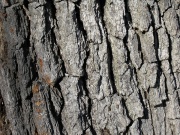Difference between revisions of "Oak bark"
Jump to navigation
Jump to search
(username removed) |
(username removed) |
||
| Line 12: | Line 12: | ||
== Authority == | == Authority == | ||
| − | * | + | * G.S.Brady, ''Materials Handbook'', McGraw-Hill Book Co., New York, 1971 Comment: p. 556 |
| − | * | + | * Matt Roberts, Don Etherington, ''Bookbinding and the Conservation of Books: a Dictionary of Descriptive Terminology'', U.S. Government Printing Office, Washington DC, 1982 |
* ''Dictionary of Building Preservation'', Ward Bucher, ed., John Wiley & Sons, Inc., New York City, 1996 | * ''Dictionary of Building Preservation'', Ward Bucher, ed., John Wiley & Sons, Inc., New York City, 1996 | ||
| − | * | + | * F. Crace-Calvert, ''Dyeing and Calico Printing'', Palmer & Howe, London, 1876 |
[[Category:Materials database]] | [[Category:Materials database]] | ||
Revision as of 06:45, 24 July 2013
Description
The bark from several species of oak contains up to 14% water-soluble dyes and tannins. The wood also contains tannins but in smaller quantities. Oak tannins contain pyrogallol and condensed tannins. They have a neutral pH, a moderate salt content and are used to produce a fine, heavy leather. Oak bark extracts are also used for dyeing. They produce colors ranging from black (black oak, quercitron) to rose-tan (red oak) to khaki (white oak). Oak dyes have good fastness to light and washing.
Synonyms and Related Terms
casca de carvalho (Port.); oak extract
Authority
- G.S.Brady, Materials Handbook, McGraw-Hill Book Co., New York, 1971 Comment: p. 556
- Matt Roberts, Don Etherington, Bookbinding and the Conservation of Books: a Dictionary of Descriptive Terminology, U.S. Government Printing Office, Washington DC, 1982
- Dictionary of Building Preservation, Ward Bucher, ed., John Wiley & Sons, Inc., New York City, 1996
- F. Crace-Calvert, Dyeing and Calico Printing, Palmer & Howe, London, 1876
